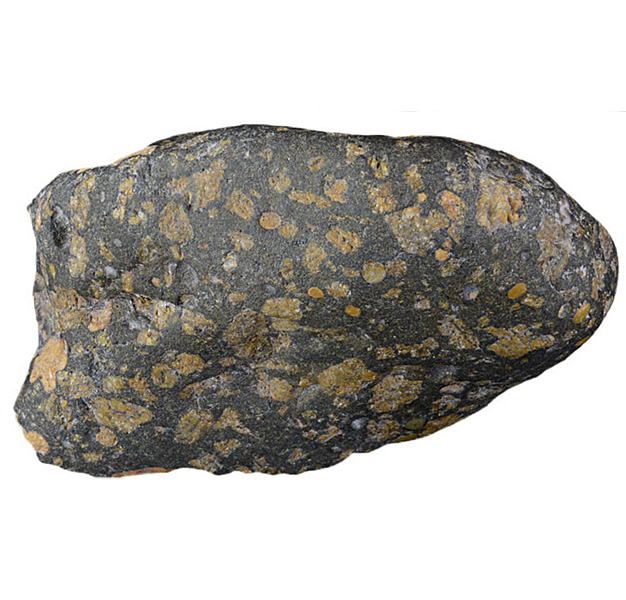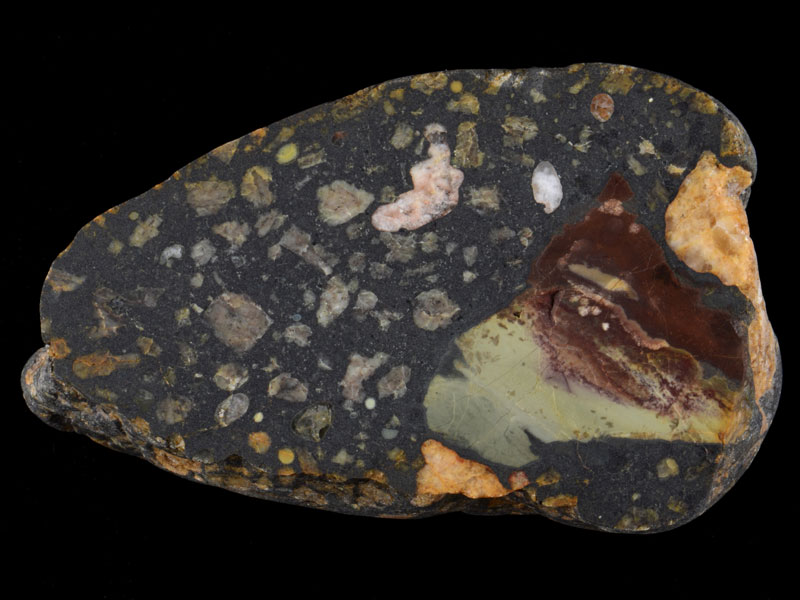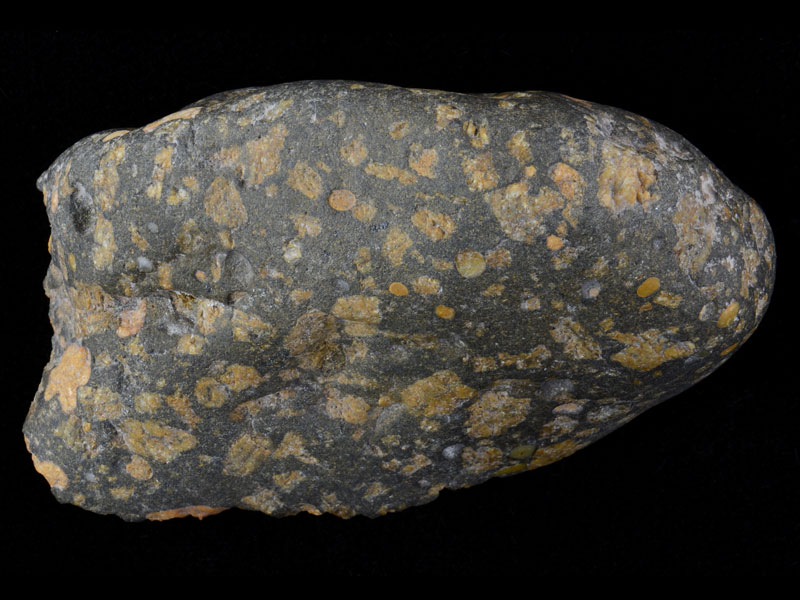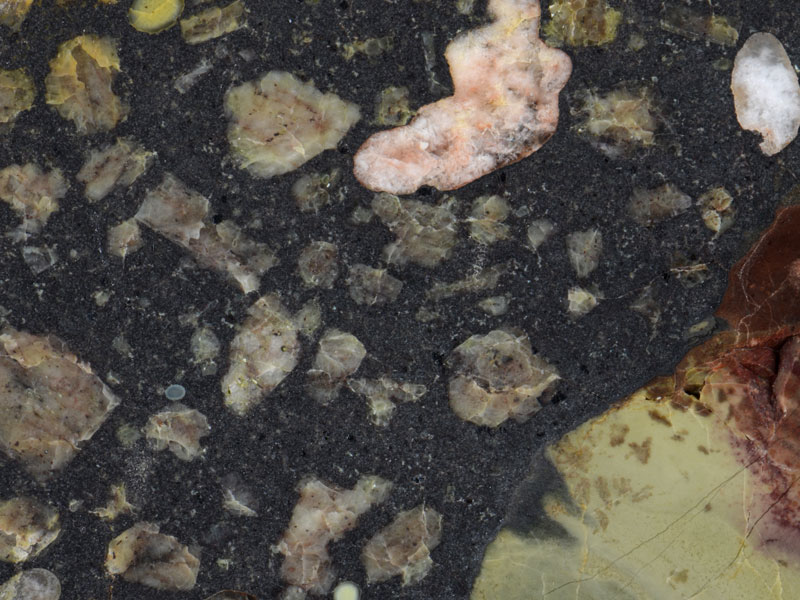
Fact sheet
This plagioclase-phyric basalt with xenoliths was collected near the Harbour, in the town of North Berwick, although the lava flow from which it comes, the Dunsapie basalt, is named after a crag and small loch on Arthurs Seat in Edinburgh. The sample is Carboniferous in age, and was one of a suite of volcanic eruptions in the Scottish borders at this time.
In thin section the plagioclase phenocrysts appear altered, particularly along cracks. Large almost circular amygdales (vesicles filled with secondary minerals) appear to be filled with very fine grained material, possibly zeolites which form a lining of fibres radiating inwards and an inner zone of random orientations with some rosettes of radiating crystals. Other amygdales contain radiating bundles of coarser grained zeolite crystals. A large xenolith of a banded rock occupies about a quarter of the thin section. The xenolith may have been derived from the local sediments and tuffs but the minerals of the xenolith are altered so it is difficult to be certain of its origin.
The United Kingdom Virtual Microscope (UKVM) collection consists of igneous, sedimentary and metamorphic rocks from around the UK.
It is intended as a teaching resource, helping to tell the story of the common rock types and how they form, and reflecting the history of the UK at the margins of the continent of Europe. The collection is a series of teaching sets, for example igneous rocks from the North Atlantic Igneous Province and SW England; high-temperature metamorphic rocks from Scotland and low-temperature metamorphic rocks from Wales; and sedimentary rocks, including English limestones and sandstones.









